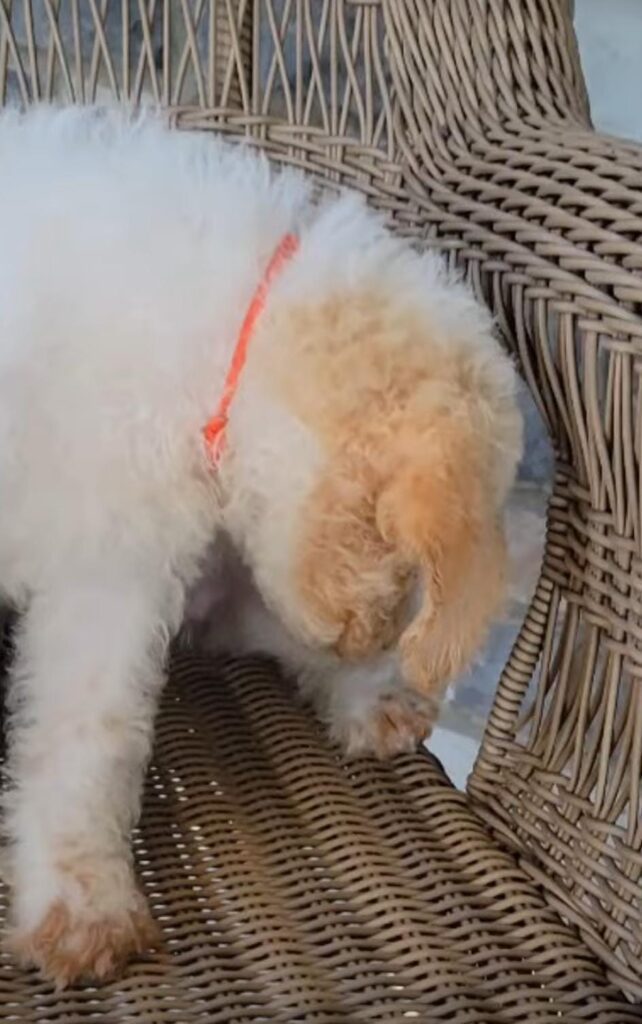There’s truly nothing like the joy of bringing home a furry friend—especially when that friend is an Apricot Labradoodle. In my years of being around dogs, I’ve learned that not all dogs are created equal. The first time I saw this charming breed, I was captivated. It felt like the star of the day had walked right into my life, wagging its fluffy tail. The way they play, their warm personality, and that soft, golden apricot shade in their coat—it’s something special. You’re not just getting a dog, you’re getting a friend, a companion who becomes part of your story.
Let me tell you, I wasn’t expecting to be so smitten. But when my Apricot Labradoodle came bounding into my world, I knew I’d found my perfect match. Their presence feels like a warm hug on a cold morning. Whether you’re coming into pet ownership for the first time or have had a whole pack before, this breed has a way of winning hearts. I’m not pulling your leg—they really do stand out. The folks I’ve recommended them to always say the same thing: “Wow, I didn’t know a dog could be this perfect.” And if you’re wondering if the hype is real, take it from someone who’s lived it—they’re truly one of a kind.
Apricot Labradoodle Overview
| Aspect | Details |
|---|---|
| Breed Mix | A cross between a Poodle and a Labrador Retriever, the Apricot Labradoodle is known for its apricot-colored coat, soft frills, and bouncy curls. |
| Coat & Color | Their color ranges from creamy, light hues to warm gold, and may change as they mature. Puppies often develop their true shade over time—some start lighter, others darker. |
| Uniqueness | This variant of the Labradoodle is both adorable and packed with personality. The apricot tone is a lighter version of red, and since red is the rarest, apricot feels twice as unique. |
| Temperament | Naturally excitable, loyal, and amiable, they are great for growing families. Their calm nature makes them perfect for households with mild to moderate allergies. |
| Physical Traits | Typically 22–24 inches in height, and weighing between 40–55 pounds, they are medium-sized with a fit, energetic build. |
| Lifespan | They live for about 12–15 years, offering long companionship. |
| Rarity & Cost | Due to their sought-after, rare coat, they’re often more expensive and harder to find for sale. I had to search months for one! |

History and Recognition
The apricot labradoodle is a hybrid dog that originated when Donald Campbell coined the term labradoodle in 1955 to describe a mix of a Poodle and a Labrador Retriever. It wasn’t until 1989 that Labradoodles began being used for important service roles, such as guide dogs and emotional support animals, thanks to Wally Conron. As hybrids, they are less regulated than purebreds, so it’s essential to be cautious when adopting from a breeder. The apricot labradoodle has become especially popular due to its rare and appealing coat color, with many pet owners willing to wait for one.
Despite their growing popularity, Labradoodles are still considered designer dogs and are not formally recognized by the AKC. However, in Australia, they are more regulated, with breeders ensuring that the puppies are healthy, vaccinated, and microchipped. Due to their rarity and popularity, the price for an apricot labradoodle can exceed $2,500. If you’re looking for this specific coat color, be prepared to wait or travel to find the right one.
Characteristics of the Apricot Labradoodle
Apricot Labradoodles are highly valued for their friendly and sociable personalities, inherited from their Labrador parents. Combined with the intelligence of the Poodle, they are quick learners, making them ideal companions for training and family fun. Their gentle temperament also allows them to get along well with others, making them a perfect addition to any household.
Size and Weight
Apricot Labradoodles come in a variety of sizes, including:
- Miniature: 15-30 lbs
- Medium: 30-45 lbs
- Standard: 45-60 lbs This wide range allows potential owners to choose a size that best fits their lifestyle and living space.
Health and Common Concerns
These dogs are generally healthy but are prone to certain conditions, including hip dysplasia and eye issues. Regular veterinary visits are essential to ensure they maintain good health.

Temperament
Apricot Labradoodles make excellent service dogs due to their trainability and desire to please. They excel in roles such as guide dogs, emotional support animals, and even diabetic dogs. Their playful nature is balanced by a gentle demeanor, which is why they are perfect for families.
Prey Drive and Compatibility with Pets
Despite being friendly, Labradoodles have a higher prey drive due to their hunting history. As a result, they may not always be compatible with small pets or farm animals. It’s important to properly socialize them to avoid any behavioral issues.
Coat Color
The Apricot color is a beautiful variation of the Labradoodle, caused by the dilution of the red gene. The striking coat, along with their lovable personality, makes them a highly desirable breed.
Care for the Apricot Labradoodle
When it comes to taking care of your apricot Labradoodle, a balanced diet is key. These active dogs need a protein-rich diet to keep up with their energy levels, along with enough fats for a shiny coat. Don’t forget to add fruits and vegetables to their meals as they are packed with vitamins and fibers. Opt for high-quality dry dog food suitable for their age, and include lean meats like chicken or turkey and fish like salmon to keep their skin healthy. But remember, always consult your vet before making any changes to their diet, as every dog has unique needs.
In addition to a good diet, regular exercise is essential. Apricot Labradoodles are energetic dogs who love activities like playing fetch or agility training. They also enjoy swimming if available, as they are natural water lovers. Regular walks, whether short or long, will keep them fit and help prevent obesity, which is common in this breed due to their love of food. Keep in mind that their unique needs may change based on factors like health status, activity level, and age, so don’t hesitate to adjust the exercise routine accordingly.

Training Your Apricot Labradoodle
When it comes to training your apricot labradoodle, using positive reinforcement is a game-changer. These dogs thrive on rewards and appreciation, so every time they follow a command or do something right, make sure to shower them with praise or give them their favorite treat. This method helps them learn quickly and makes training enjoyable. However, remember that patience is key. These intelligent but sometimes stubborn dogs need time to get the hang of things. They may not learn every command right away, but with love and consistency, your furry friend will get there!
Another important aspect of training is socialization. Start early by introducing your apricot labradoodle to different environments, people, and other pets. This will help them grow into confident adults who aren’t afraid of new experiences. It’s crucial to remain consistent with house rules, too—like not letting them jump on the couch. Having everyone in your family stick to these rules will help your dog understand expectations. With time, patience, and a bit of fun, your apricot labradoodle will become the well-behaved pup you’ve always dreamed of.

FAQ
Are apricot Labradoodles rare?
Yes, apricot Labradoodles are considered relatively rare compared to other colors like chocolate, black, or yellow Labradoodles. The apricot color is a lighter, more peachy shade of cream or golden, and it is less common in the breed. This color variation is a result of specific genetic combinations between the Labrador Retriever and the Poodle parent breeds, both of which can carry recessive genes for this color. While they are not extremely rare, finding an apricot Labradoodle may take some searching, especially if you have a preference for this unique and beautiful coat color.
What is the rarest color of Labradoodle?
The rarest color of Labradoodle is typically the chocolate or blue variety. The chocolate Labradoodle comes from a chocolate Labrador parent, but this color is less common in the Poodle gene pool, which is why it’s rarer. Blue Labradoodles, a unique shade often described as a blue-gray, are incredibly rare and result from a combination of both Labrador and Poodle genetics.
What color Labradoodle is most expensive?
The most expensive Labradoodle color is often the apricot or cream Labradoodle. These colors tend to be more sought after, especially in designer dog markets. Apricot Labradoodles are popular due to their lighter, vibrant shades, and they can be priced higher due to demand. In addition, rare colors like chocolate and blue can also fetch higher prices, as they are not as commonly found in the breed.
What are the most desirable Labradoodle colors?
The most desirable Labradoodle colors tend to vary depending on personal preference, but the top ones include cream, apricot, chocolate, and black. Cream Labradoodles are often chosen for their light, elegant appearance, while apricot and chocolate are highly sought after for their unique and rich tones. Black Labradoodles are also popular for their classic, striking look, and they tend to be one of the most common colors, making them desirable as well.
3 Best Shampoo for Labradoodle: Keep Your Pup Happy and Healthy
The Cost of Owning a Labradoodle In 2025

